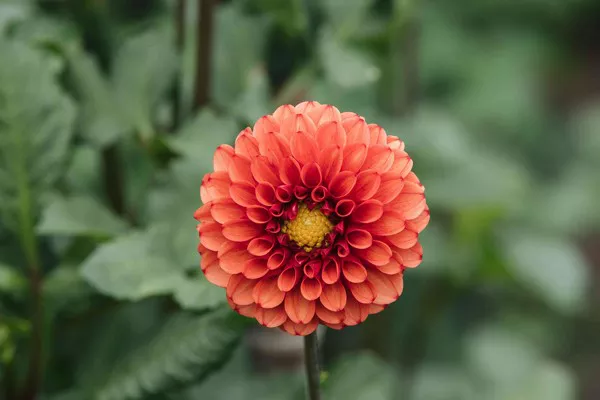Marigolds, with their vibrant blooms and pest-repelling properties, have long been a favorite in gardens and landscapes. However, like any plant, marigolds are not immune to pests that can hinder their growth and beauty. To maintain the health and splendor of your marigold garden, it’s essential to have a strategic plan in place to protect them from potential threats. This article delves into the world of marigold pests, offering valuable insights, preventive measures, and effective solutions to ensure your marigolds thrive pest-free.
Understanding Marigold Pests: Common Culprits
Before implementing pest control strategies, it’s crucial to familiarize yourself with the common pests that may target marigolds. These pests can include:
1. Aphids
Aphids are tiny, soft-bodied insects that feed on plant sap. They often cluster on the undersides of leaves and can cause stunted growth, distorted leaves, and the secretion of a sticky substance called honeydew.
2. Whiteflies
Whiteflies are small, flying insects that congregate on the undersides of leaves. They can cause yellowing, wilting, and premature leaf drop. Like aphids, whiteflies also produce honeydew, leading to the growth of sooty mold.
3. Caterpillars
Caterpillars, such as the cabbage looper and the cutworm, can chew through marigold leaves, causing irregular holes and damage. They can quickly defoliate plants if not controlled.
4. Spider Mites
Spider mites are tiny arachnids that feed on plant cells by piercing the leaf tissue. Infested leaves may develop a stippled appearance, turn yellow, and eventually drop off.
5. Snails and Slugs
Snails and slugs are nocturnal pests that chew irregular holes in marigold leaves. They are particularly active during damp weather and can cause extensive damage if left unchecked.
6. Nematodes
Nematodes are microscopic worms that live in the soil and feed on plant roots. They can lead to stunted growth, wilting, and overall decline in marigold health.
Preventive Measures: Creating a Pest-Resistant Environment
Creating a pest-resistant environment is a proactive approach to warding off potential threats to your marigolds. Here are some preventive measures to consider:
1. Choose Resistant Varieties
Opt for marigold varieties that are known for their pest-resistant traits. French marigolds (Tagetes patula) and African marigolds (Tagetes erecta) are often less attractive to certain pests due to their natural compounds.
2. Promote Healthy Soil
Healthy soil is the foundation of strong, pest-resistant plants. Amend the soil with organic matter, such as compost, to improve drainage and fertility.
3. Proper Spacing
Plant marigolds at the recommended spacing to ensure proper air circulation and minimize opportunities for pests to spread.
4. Companion Planting
Companion planting marigolds with other pest-repelling plants, such as basil, rosemary, and garlic, can create a natural barrier against pests.
5. Mulching
Apply a layer of organic mulch around marigold plants to help retain soil moisture, suppress weed growth, and discourage pests from reaching the plants.
Integrated Pest Management (IPM): Effective Strategies
Integrated Pest Management (IPM) combines various strategies to manage pests in a holistic and environmentally responsible manner. Implementing IPM practices can help maintain the balance of your garden ecosystem. Here’s how:
1. Regular Inspection
Frequent monitoring of your marigolds allows you to identify pest infestations early and take action before they escalate.
2. Hand Picking
For smaller infestations, physically remove pests from the plants by hand. This method can be effective for caterpillars, slugs, and snails.
3. Beneficial Insects
Introduce beneficial insects, such as ladybugs, lacewings, and parasitic wasps, to your garden. These insects prey on pests, helping to naturally control their populations.
4. Horticultural Oils and Soaps
Horticultural oils and insecticidal soaps are effective at suffocating soft-bodied insects like aphids and whiteflies. Ensure you follow application instructions to avoid harming beneficial insects.
5. Neem Oil
Neem oil, derived from the neem tree, has insecticidal properties and can disrupt the life cycle of various pests. It is considered a safer option for organic gardening.
Chemical Solutions: A Last Resort
While chemical pesticides should be a last resort due to their potential impact on the environment and beneficial insects, they can be effective when used judiciously. If you opt for chemical solutions:
Read Labels: Carefully read and follow the instructions on pesticide labels to ensure safe and effective use.
Targeted Application: Apply pesticides directly to the affected areas rather than spraying the entire plant.
Use Less-Toxic Options: Choose pesticides that are least harmful to non-target organisms and the environment.
Maintaining Vigilance: Ongoing Pest Management
Maintaining a pest-free marigold garden requires ongoing vigilance. Regularly inspect your plants for signs of pests, monitor their health, and adapt your pest management strategies as needed. Remember that prevention and early intervention are key to minimizing the impact of pests on your marigolds.
Conclusion
Protecting marigolds from pests is a multifaceted endeavor that involves knowledge, preparation, and a commitment to maintaining a healthy garden ecosystem. By understanding common pests, implementing preventive measures, and adopting Integrated Pest Management (IPM) strategies, you can enjoy the beauty of marigolds without compromising their health. Cultivating a pest-resistant environment not only safeguards your marigolds but also contributes to the overall vitality and harmony of your garden.


